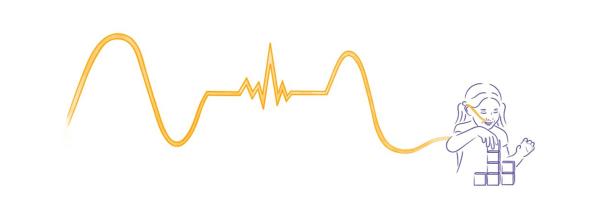
Campaign to fight feeding tube stigma
Feeding tubes aren’t pleasant, but they’re a necessary tool to help kids develop. And it’s about time they lost their stigma says UTS education researcher, Nick Hopwood.

Nick Hopwood, Associate Professor, Faculty of Arts and Social Sciences
Profile page
Spend time with new parents, or in a baby health clinic or maternity ward, and the ‘breast v bottle’ debate is still bubbling away. But there is a third way to feed that’s rarely talked about – via tube.
‘As a parent with a child with a feeding difficulty, every time you only hear ‘breast and bottle’, your child is left out, your child is excluded. They’re made invisible,’ explains Nick, who is working with clinicians across several states, families and researchers to help tackle the stigma.
The project used a Social Impact Grant to lay the groundwork for a public awareness campaign about the misunderstood medical device. As part of the process, parents worked with researchers to come up with messages and principles to reflect what really matters to families.
‘Many parents told us about distressing encounters where they’d be taking their child to a park and people would say things like “oh my gosh how long has she got to live” or ”what have you done to them?”‘ says Nick.
‘Clearly something needs to change.’
So what is a feeding tube?
There’s no denying that there’s an ick factor when it comes to medical procedures, and feeding tubes are no exception.
Inserted through the nose or directly passing to the stomach or small intestine, they are used to get nutrients into kids who can’t access them sufficiently by mouth. But society’s reactions to the process can be almost as confronting for families as the medical procedures themselves.
‘If you want to make a child look sick and make people feel sad, shove a tube up their nose and put them on their side, and make it black-and-white. People go, “Oh my gosh, how awful!”‘ Nick Hopwood, Associate Professor, UTS School of International Studies and Education
The reality is much more complex. Children use tubes for many reasons – some have cancer. Others are born premature or have a cleft palate or autism spectrum disorder.
All children with feeding tubes require them to survive, but not all children with tubes have life-long illness. For many kids, the feeding tube is a temporary fixture.
Based on ideas developed in the parent workshops, students from UTS’s volunteer program Shopfront created videos, branding and key messaging that will be developed into a larger awareness campaign by the team.
Tubes fill kid’s stomachs – sharing meals with family and friends fills kid’s hearts
From the project research, it’s clear that parents would like others to look past the tube and see their child as, well, a child, Nick says.
‘Kids with feeding tubes, they’re just like every other little kid who wants to play, who wants to celebrate birthday parties and join in, to take risks, have dreams,’ he explains.
‘You want people to connect with children as children, to feel the joy that children and people around them feel when children are happy and thriving. It shouldn’t matter whether the kid has a tube or not.’
It’s an attitude to life and work that Nick obviously takes to heart. Last week he took a one-on-one class – with a difference.
‘I had a cooking lesson run by a seven-year-old who will always need a tube to feed. He can chew and swallow small amounts of food, but a tube and formula are his main ways of getting nutrition. Yet food is his main obsession. He wants to be a chef when he grows up. How cool is that? Cooking with him gave me an insight into how food is an outlet for his creativity, his joy in experimenting, inventing his own recipes, and doing things with and for others.’
The SuCCEED Child Feeding Alliance is fundraising to support their public awareness campaign. To donate or get involved, visit the ChildFeeding.org website.
The Problem
The families of babies and infants with feeding tubes face stigma in everyday life, with most people unaware of why tubes are used, and fearful as a result.
The Response
Parents of tube-fed infants and children worked with UTS’s Design Innovation Research Centre to lay the groundwork for a public awareness campaign. From out of the workshops, student volunteers were able to create videos, branding and key messaging that will be further developed by the team.
What helped accomplish this?
SuCCEED connected with the Centre for Social Justice & inclusion through their application for Social Impact Grant funding. The Centre put them in touch with experts in co-design at the Design Innovation Research Centre and UTS’s student volunteer program, Shopfront.
What has changed as a result?
Three short animations have been designed by student volunteers to help parents communicate about their child’s tube with friends and family. The videos will be used as a starting point to develop a larger campaign to reduce stigma and raise awareness in the wider community.
Download full case study
